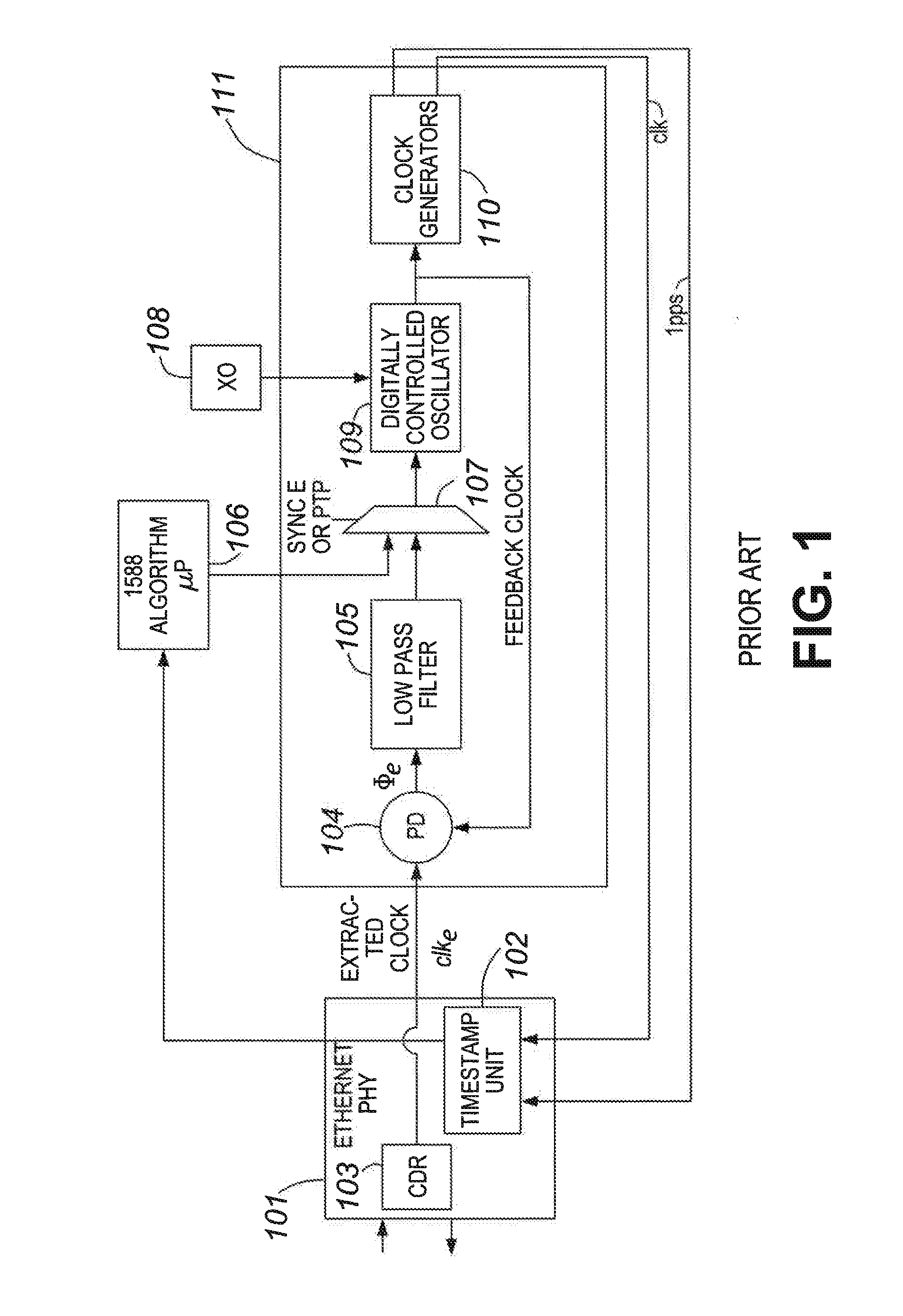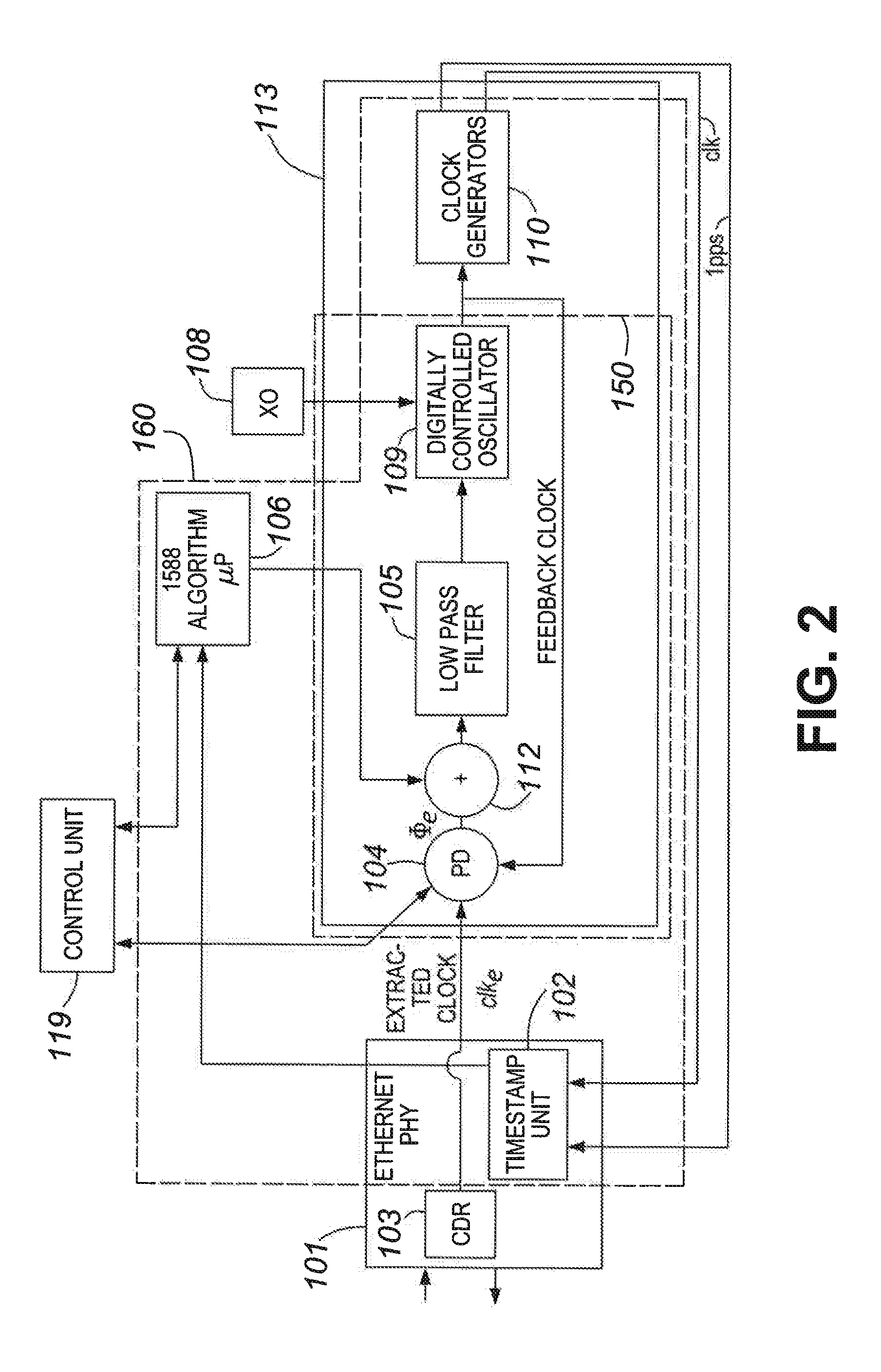Double phase-locked loop with frequency stabilization
a phase-locked loop and frequency stabilization technology, applied in the direction of pulse automatic control, electric devices, etc., can solve the problems of increasing propagation delay, affecting the stability of input signals, and unable to generate time-of-day information using prc, so as to reduce phase noise in input signals, narrow loop bandwidths, and the effect of not losing stability
- Summary
- Abstract
- Description
- Claims
- Application Information
AI Technical Summary
Benefits of technology
Problems solved by technology
Method used
Image
Examples
Embodiment Construction
[0041]The invention will first be exemplified in the context of a local clock generator providing time-of-day information The prior-art hybrid clock generator circuit shown
[0042]FIG. 1 comprises an Ethernet Physical Layer Device (PHY) 101, which a receives a synchronous Ethernet signal and separates data and clock information from this signal in the clock data recovery (CDR) module 103. The extracted clock signal clke is fed to a block 111 forming part of a digital phase-locked loop. This block 111 locks to this extracted clock clke and removes jitter and wander. A clock generator 110 generates an output clock signal clk as well as a one part per second signal (1 pps) based on the output of a digital controlled oscillator (DCO) 109.
[0043]Both the clk and 1 pps signals are fed back to a timestamp module 102 in the PHY device 101. The time stamped packets, which are derived from the received packets by time stamp unit 102, are used by microprocessor (uP) 106 running the IEEE 1588 algo...
PUM
 Login to View More
Login to View More Abstract
Description
Claims
Application Information
 Login to View More
Login to View More - R&D
- Intellectual Property
- Life Sciences
- Materials
- Tech Scout
- Unparalleled Data Quality
- Higher Quality Content
- 60% Fewer Hallucinations
Browse by: Latest US Patents, China's latest patents, Technical Efficacy Thesaurus, Application Domain, Technology Topic, Popular Technical Reports.
© 2025 PatSnap. All rights reserved.Legal|Privacy policy|Modern Slavery Act Transparency Statement|Sitemap|About US| Contact US: help@patsnap.com



